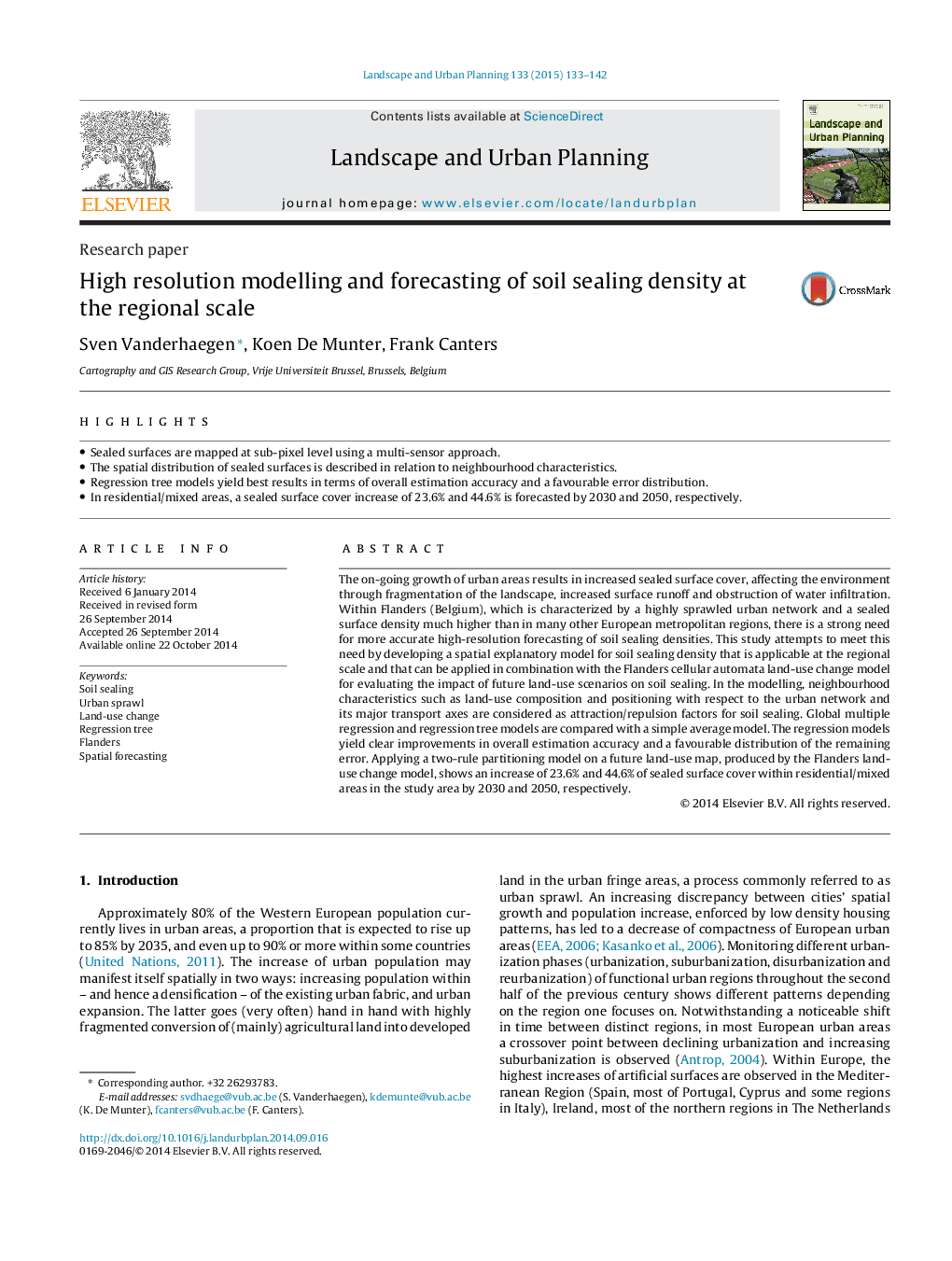| Article ID | Journal | Published Year | Pages | File Type |
|---|---|---|---|---|
| 1049208 | Landscape and Urban Planning | 2015 | 10 Pages |
•Sealed surfaces are mapped at sub-pixel level using a multi-sensor approach.•The spatial distribution of sealed surfaces is described in relation to neighbourhood characteristics.•Regression tree models yield best results in terms of overall estimation accuracy and a favourable error distribution.•In residential/mixed areas, a sealed surface cover increase of 23.6% and 44.6% is forecasted by 2030 and 2050, respectively.
The on-going growth of urban areas results in increased sealed surface cover, affecting the environment through fragmentation of the landscape, increased surface runoff and obstruction of water infiltration. Within Flanders (Belgium), which is characterized by a highly sprawled urban network and a sealed surface density much higher than in many other European metropolitan regions, there is a strong need for more accurate high-resolution forecasting of soil sealing densities. This study attempts to meet this need by developing a spatial explanatory model for soil sealing density that is applicable at the regional scale and that can be applied in combination with the Flanders cellular automata land-use change model for evaluating the impact of future land-use scenarios on soil sealing. In the modelling, neighbourhood characteristics such as land-use composition and positioning with respect to the urban network and its major transport axes are considered as attraction/repulsion factors for soil sealing. Global multiple regression and regression tree models are compared with a simple average model. The regression models yield clear improvements in overall estimation accuracy and a favourable distribution of the remaining error. Applying a two-rule partitioning model on a future land-use map, produced by the Flanders land-use change model, shows an increase of 23.6% and 44.6% of sealed surface cover within residential/mixed areas in the study area by 2030 and 2050, respectively.
